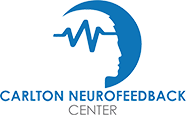As Thanksgiving approaches, many of us look forward to much anticipated meals together and catching up with friends and family. Whether intentional or not, these gatherings and traditions remind us to be grateful for all we have in our lives. More than just a gobble fest, the tradition of gratitude, if we keep at it on a repetitive, consistent basis, can be a launching point for even better health and life balance all year long.
It’s true what they say about positive thought and gratitude that it really does have the power to rewire brains for long-term positive outcomes. Here’s what you need to know about the practice of gratitude to harness the power of positivity for yourself.
Gratitude improves your mood
Research studies show that experiencing or expressing gratitude increases neurotransmitters like serotonin and dopamine that improve your mood. If you’ve been going through some difficult times, experiencing gratitude can give you a break from toxic emotions, sadness, and stress. It is literally known to make people happier. The trick is to keep it going.
Gratitude and kindness are addictive
The good part about gratitude and expressing or receiving acts of kindness is that it feels good, and our brain wants more. Who doesn’t want more kindness and positivity? This positive feedback loop is one with healthy benefits, including helping us to be resilient in the face of stress, enjoy deeper sleep, and experience stronger immunity, less pain, better relationships, and more energy.
Gratitude is most effective if we make it a regular habit
Gratitude starts by setting an intention. There are many ways to make it a regular habit. You can write letters, start a gratitude journal, focus on the good, meditate, or even tell people in your life how you feel. It can even be as simple as setting reminders on your phone or starting every morning with a deep breath and setting an intention of positivity and gratitude for the day. To really help it take hold, you have to find a way to help yourself make it a regular habit.
Gratitude and positivity attract the same
Positive thought has a certain wavelength that can be measured in the human brain. Would it surprise you to learn that human brains generate, on average, 30 watts of electromagnetic energy? When we work on reinforcing our habit of positivity, it can keep those positive emotions and related health benefits going. Negative experiences and emotions, though, can derail that progress, so it’s important to find the practice that works for you.
In this helpful video, find out more about the science behind the power of positive thinking.
Neurofeedback can help reinforce positive emotions
Sometimes it can be hard on our own to get enough consistent, repetitive practice to prime the positivity pump. Habits can be hard to break, and mental health concerns like depression, anxiety, and other brain-based conditions can make it difficult to accomplish on our own. Neurofeedback training is a non-invasive, simple solution to train your brain so it can more easily adopt new, healthier habits of mind. Best of all, the training is relaxing, and the effects are long-lasting. Contact Dr. Ed Carlton at Carlton Neurofeedback Center in Manassas, Virginia, at 703-335-9149 or go online to request a free, no-obligation appointment to see if neurofeedback could be right for you or a loved one.


